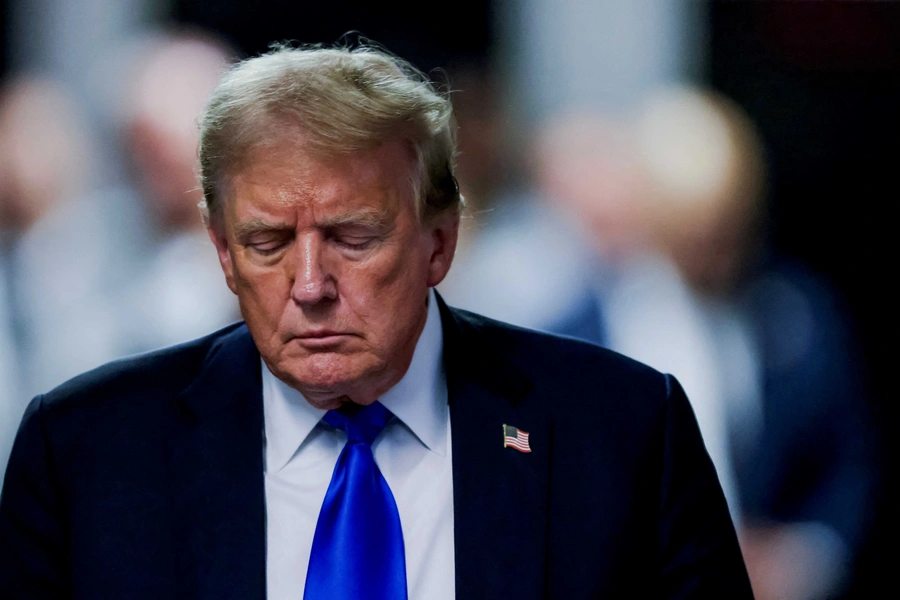Donald Trump became the first president in US history to be impeached twice.
Impeachment is one of the most serious constitutional processes in the United States, and it becomes even more notable when a president is impeached twice.
Donald Trump is the first and only U.S. president to face impeachment twice, making the process historically significant and providing a unique case study in American governance.
Understanding what happens in such a situation requires a close look at the constitutional framework, Senate procedures, and potential consequences.
The Basics of Impeachment
Impeachment is the formal process by which a sitting president, vice president, or other federal official can be charged with wrongdoing.
The U.S. Constitution specifies that officials may be impeached for “treason, bribery, or other high crimes and misdemeanors.”
It is important to note that impeachment is not removal from office — it is essentially an indictment, with the Senate trial determining whether the official should be removed.
The Impeachment Process
Impeachment begins in the U.S. House of Representatives.
House members draft articles of impeachment outlining specific allegations.
A simple majority vote in the House is sufficient to approve one or more articles and formally impeach the president.
Once impeached, the president faces a trial in the Senate.
The Chief Justice of the U.S. Supreme Court presides over trials of sitting presidents.
Senators serve as jurors, considering evidence presented by the House managers and the president’s legal team.
A two-thirds majority in the Senate is required to convict, which would result in removal from office.
After conviction, the Senate may also vote separately to disqualify the individual from holding future federal office, although this step requires a separate vote.
What Exactly Happens When a President Is Impeached Twice?
When a president is impeached a second time, the process itself does not change.
Each impeachment is treated as a separate case, addressing distinct alleged misconduct.
Donald Trump’s first impeachment, in December 2019, focused on allegations involving Ukraine.
His second impeachment, in January 2021, was related to incitement of insurrection following the attack on the U.S. Capitol.
The Constitution does not limit the number of impeachments a president may face during a term or across multiple terms.
Historical Precedent
Trump’s two impeachments are unique in U.S. history.
Both trials ended in acquittal, meaning he was not removed from office on either occasion.
The second trial, in particular, occurred after Trump had left office, raising legal questions about whether a former president can be tried.
The Senate ultimately decided it had jurisdiction, but the conviction threshold of a two-thirds majority was not met.
Now, as the current president again in 2025, Trump demonstrates that impeachment, even twice, does not prevent a return to the office if voters elect the individual.
Consequences Beyond Removal
Even without removal, impeachment carries significant political and reputational consequences.
It can damage a president’s public image, alter political influence, and shape party dynamics.
Additionally, impeachment can limit future political ambitions if the Senate votes to disqualify the president from holding office, though this did not occur in Trump’s case.
The process can also influence legislative priorities, voter behavior, and public perception of governmental accountability.
Political and Public Impact
Being impeached twice amplifies public debate and partisan divisions.
While the constitutional mechanism is legal and binding, the political ramifications often dominate media and public discourse.
For Trump, both impeachments generated nationwide attention and fueled discussions about presidential accountability, the role of Congress, and the balance of power between branches of government.
Even without conviction, the historical record of impeachment can affect a president’s legacy and influence policymaking.
Lessons From Two Impeachments
Trump’s experience illustrates several points:
-
Constitutional Checks – Impeachment is a key tool to hold presidents accountable under the law.
-
Political Influence – Votes for impeachment and acquittal often reflect partisan dynamics as much as factual findings.
-
Removal Is Not Guaranteed – Impeachment itself does not remove a president; Senate conviction is required.
-
Multiple Impeachments Are Legal – The Constitution allows for repeated impeachment during one or more terms.
-
Future Office Is Contingent – The Senate may disqualify a convicted president, but this is a separate step.
The Significance of Trump Being Impeached Twice
A president being impeached twice is unprecedented but fully legal under U.S. law.
Each impeachment proceeds through the same process: House investigation and vote, followed by a Senate trial and potential removal.
Even without removal, multiple impeachments carry political, reputational, and historical significance.
Donald Trump’s unique situation demonstrates that a president can be impeached twice, acquitted both times, and still return to office through electoral victory.
This underscores both the constitutional checks on presidential power and the interplay of law, politics, and public opinion in the American system.




